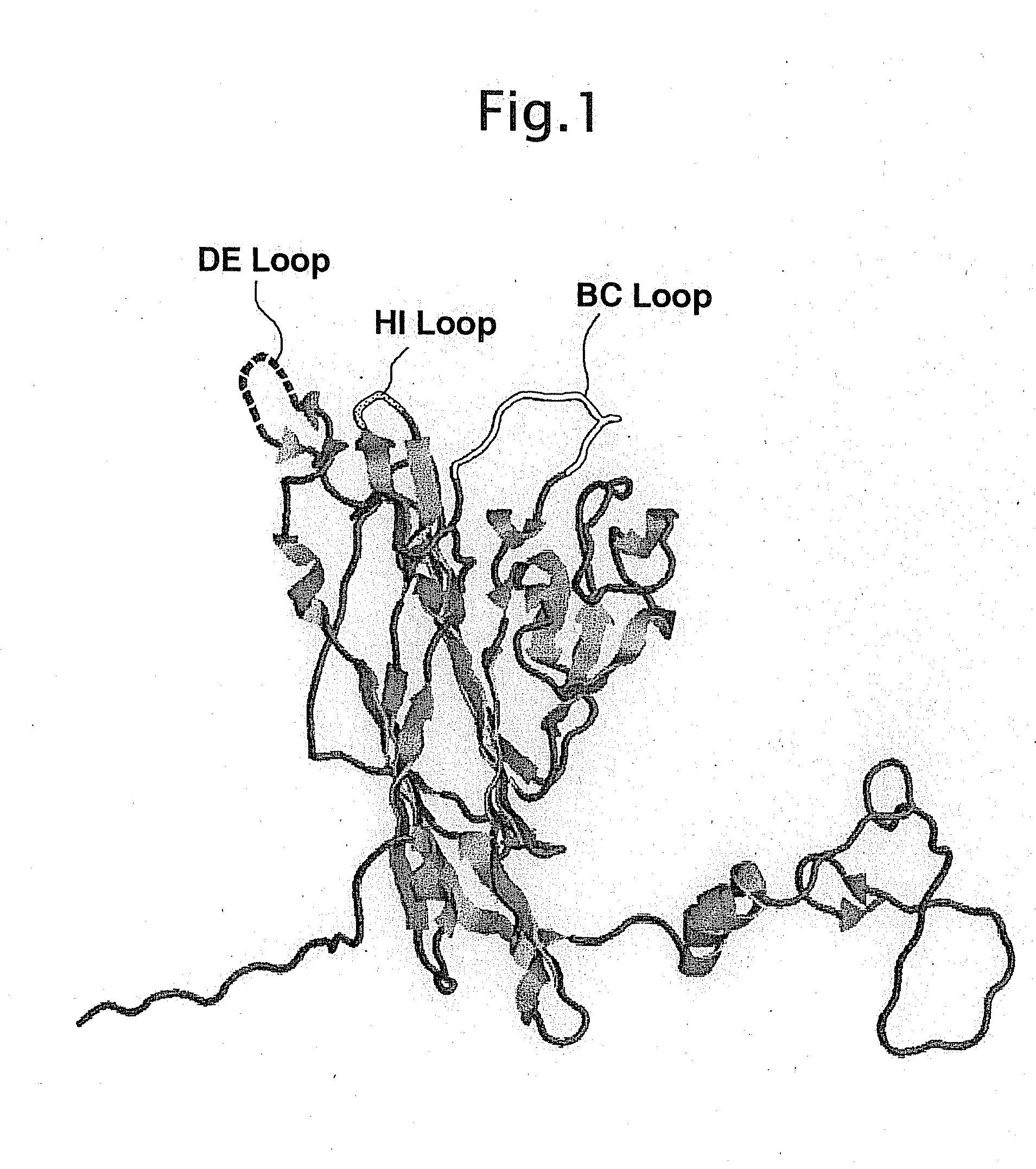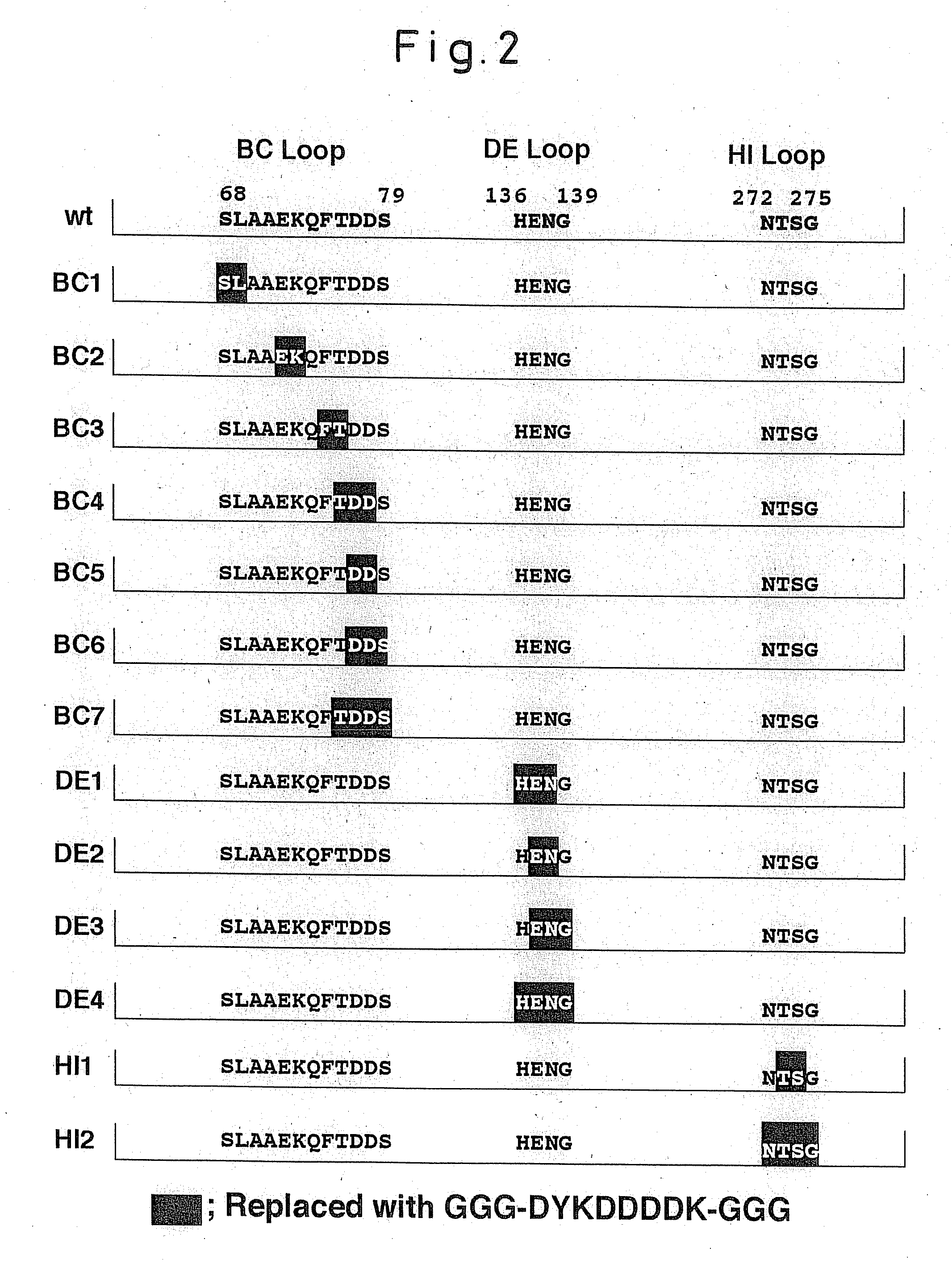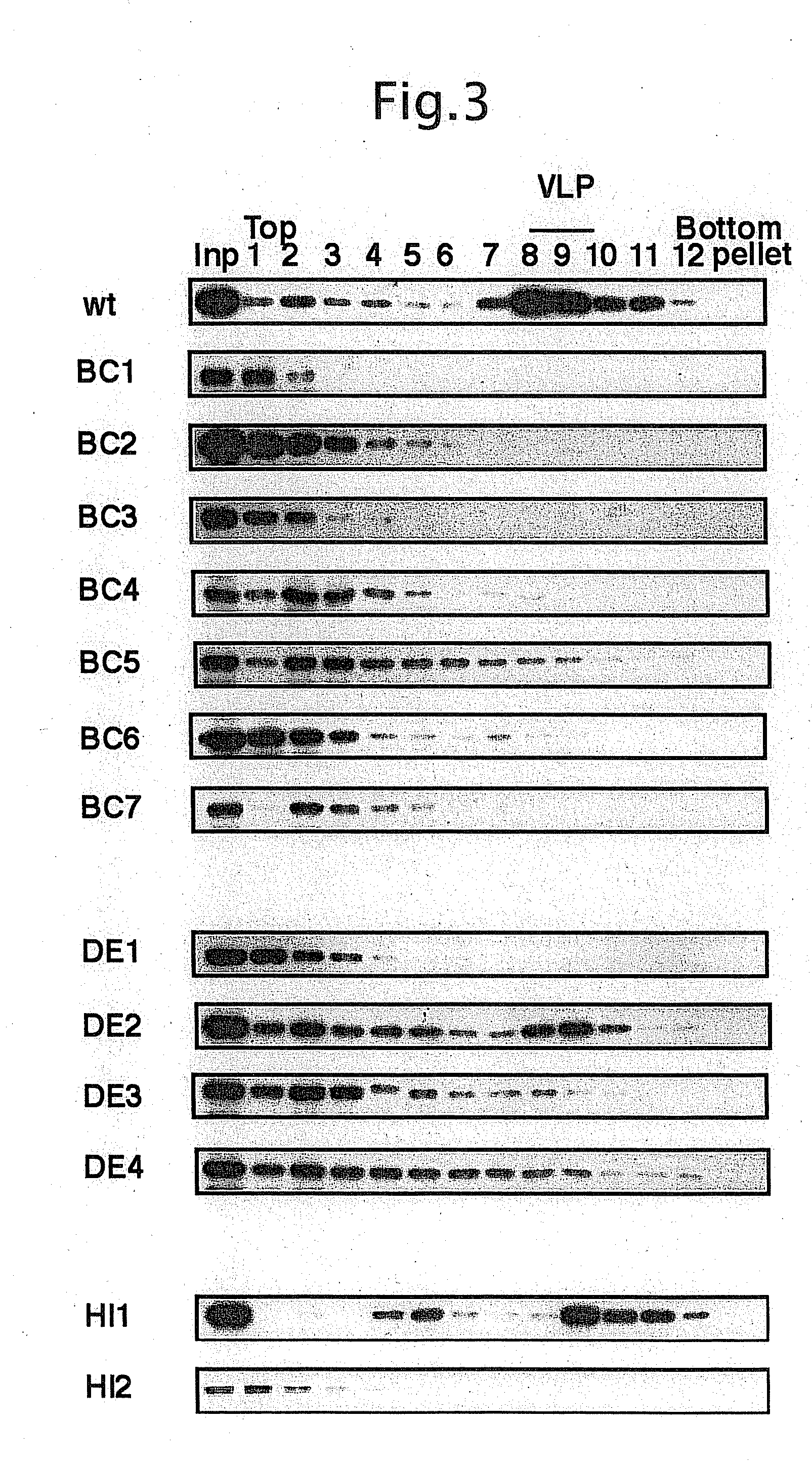Altered virus capsid protein and use thereof
- Summary
- Abstract
- Description
- Claims
- Application Information
AI Technical Summary
Benefits of technology
Problems solved by technology
Method used
Image
Examples
example 1
Preparation of an Altered Type VP1 Protein
[0037]In this Example, focusing on 3 domains, the BC-loop, the HI-loop and the DE-loop, among domains presented at the outside of SV40 (see FIG. 1), preparations of altered type SV40-VP1 genes in which foreign epitopes had been inserted were carried out. In the SV40-VP1 protein, a specified amino acid residue on a loop, a part of which was presented at the outside of SV40-VP1 protein, was replaced by the Flag sequence having 3 glycine residues on each end thereof, to prepare the altered type SV40-VP1 gene. The altered gene was inserted into pFastBac1 vector and then transformed into E. coli DH5α.
[0038]In the next, Sf9 cells seeded in tissue culture dishes (IWAKI) having a diameter of 10 cm in the population of 1×107 cells per dish were infected with recombinant baculoviruses at an m.o.i. (Multiplicity of Infection) of 5 to 10, which can express each of altered type virus protein (VP1) of SV40. The recombinant baculoviruses, which can express...
example 2
Analysis of Intracellular Formation of Virus-Like Particles of Altered Type Vp1 Protein In Sf-9 Cells
[0040]After determination of the expression, 2 μl of the cell disruption mixture was diluted by 10 times over to 20 μl with 20 mM Tris-HCl (pH 7.9), and then fractionated by 20 to 40% (w / v) sucrose density-gradient centrifugation (at 55,000 rpm, at 4° C. for 1 hour) using Open Top Ultraclear Tube for SW51Ti (Beckman).
[0041]Samples of fractions obtained from 20 to 40% (w / v) sucrose density-gradient centrifugation were analyzed for VLP forming capability of the altered VP1 by Western blotting using anti-VP1 antibody. Peak of VP1-VLP formed by wild type VP1 protein (hereinafter, referred to as Wt-VLP) was detected in 8th through 10th fractions (FIG. 3). The similar peak was also observed in the altered type VP1 that the Flag sequence was inserted into DE-loop and HI-loop.
[0042]Two hundreds micro litter of the cell disruption mixture was fractionated by 20 to 50% (w / v) cesium chloride de...
example 3
Analysis of Functional Role of Glycine Residues in the Formation of Virus-Like Particles
[0043]In this Example, what effect the number of glycine residues to be added to each side of a Flag sequence inserted into the loop domain has on the formation of virus-like particles of the altered type VP1 was studied.
[0044]Using HI-loop of the above-described loop domains as a target site, altered type VP1 genes inserted with Flag sequence having 0 to 6 glycine residues in each side thereof were prepared according to the same procedures as described in Examples 1 and 2. The results are shown in FIG. 6, FIG. 7, and the following Table 2.
TABLE 2Number of glycine residueVLP forming capability0Not detectable1VLP was formed23456
[0045]In addition, from the results of Western blotting analysis of the samples fractionated by sucrose density-gradient centrifugation using anti-VP1 antibody, it was found that efficiency of the formation of virus-like particles of the sample added with 3 glycine residues...
PUM
| Property | Measurement | Unit |
|---|---|---|
| Length | aaaaa | aaaaa |
| Length | aaaaa | aaaaa |
| Length | aaaaa | aaaaa |
Abstract
Description
Claims
Application Information
 Login to View More
Login to View More - R&D
- Intellectual Property
- Life Sciences
- Materials
- Tech Scout
- Unparalleled Data Quality
- Higher Quality Content
- 60% Fewer Hallucinations
Browse by: Latest US Patents, China's latest patents, Technical Efficacy Thesaurus, Application Domain, Technology Topic, Popular Technical Reports.
© 2025 PatSnap. All rights reserved.Legal|Privacy policy|Modern Slavery Act Transparency Statement|Sitemap|About US| Contact US: help@patsnap.com



